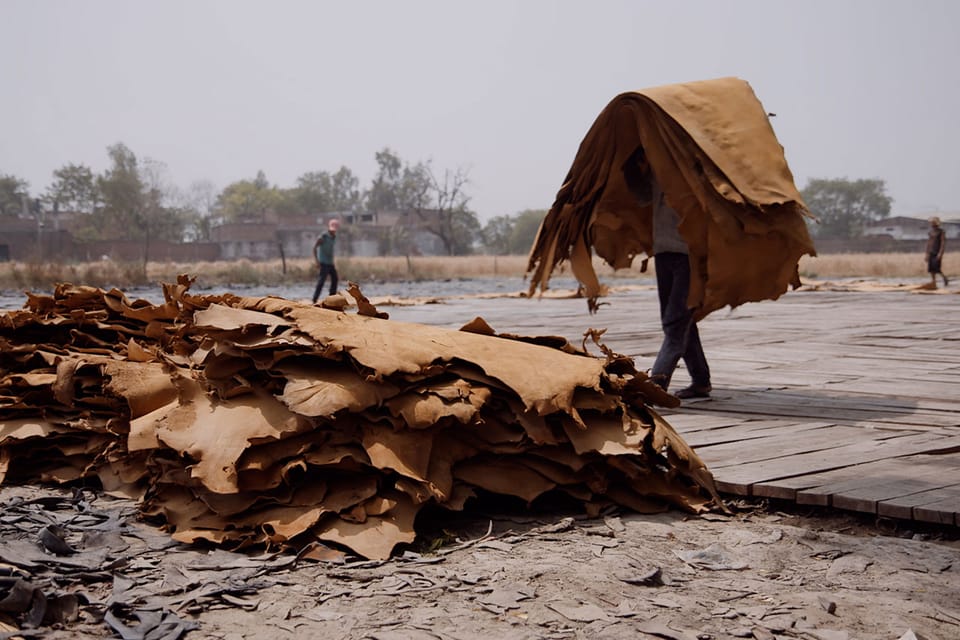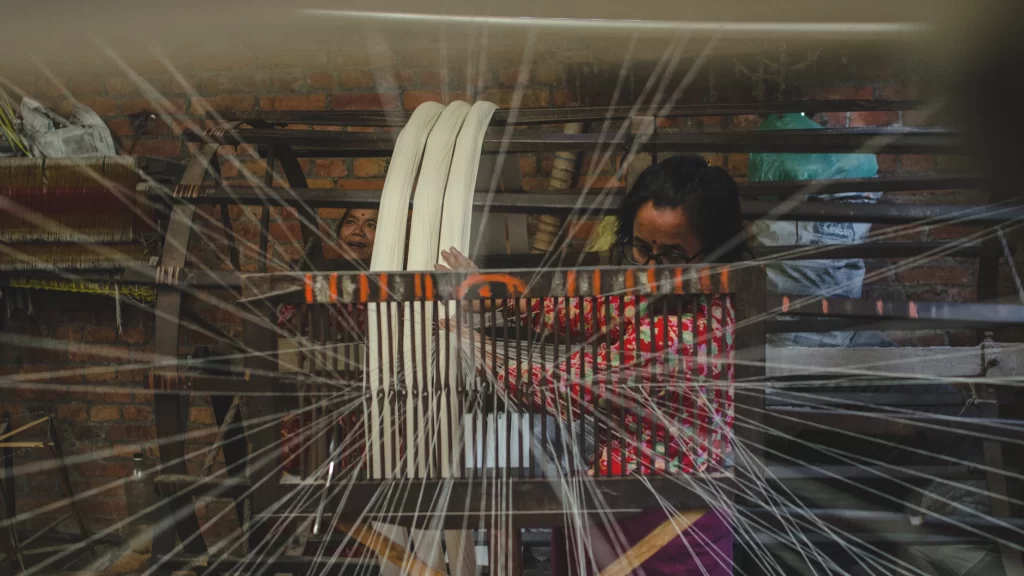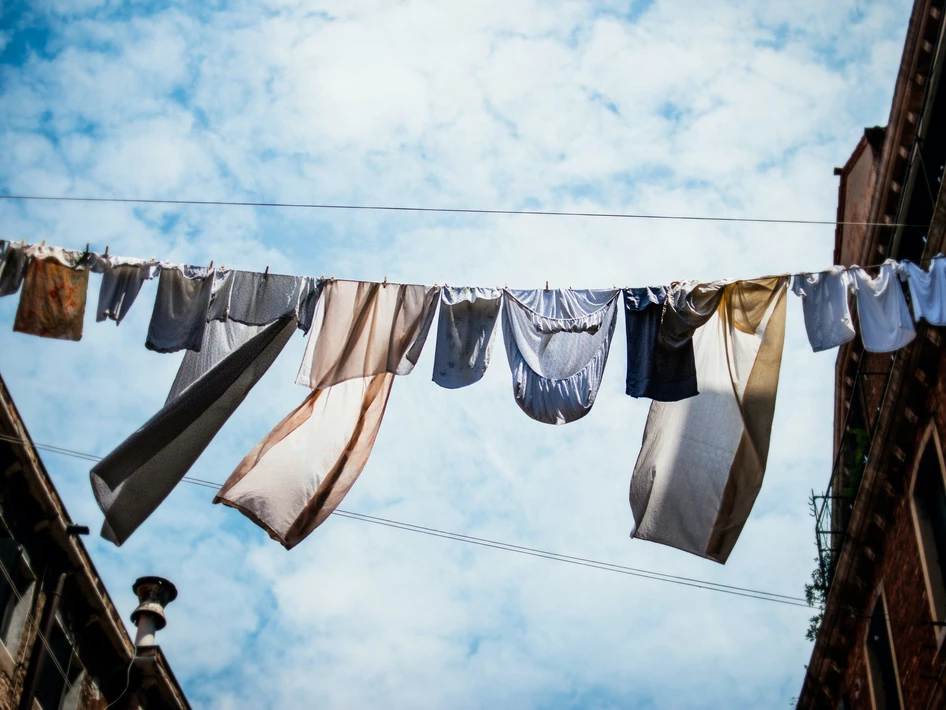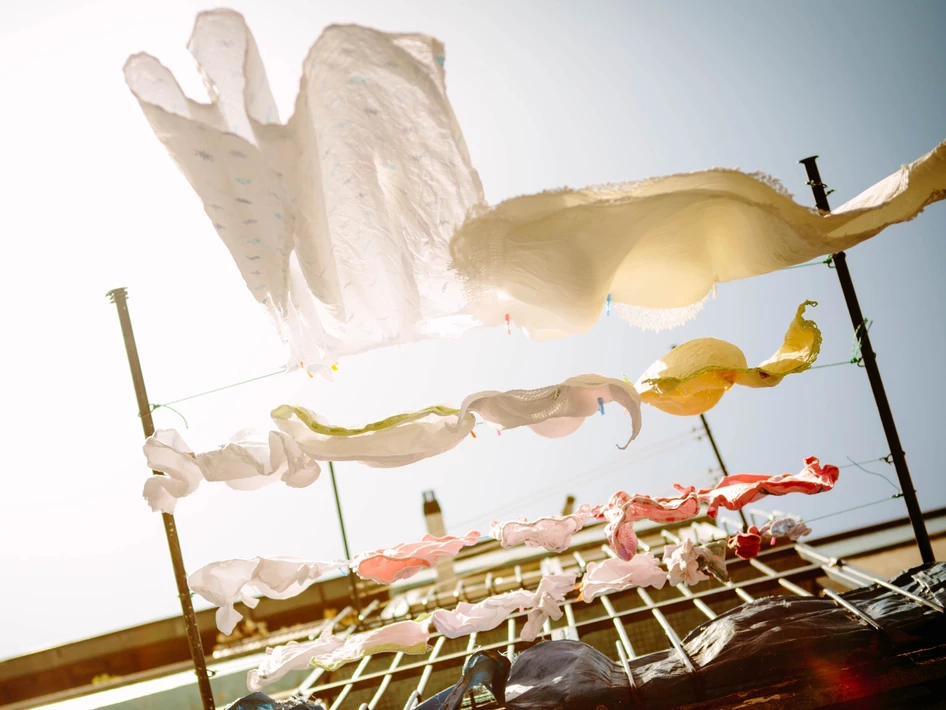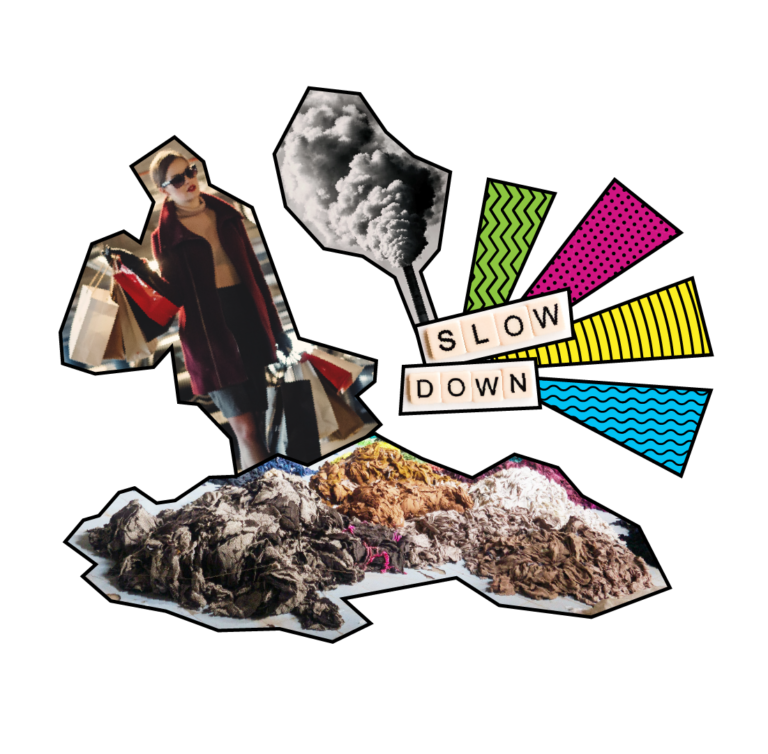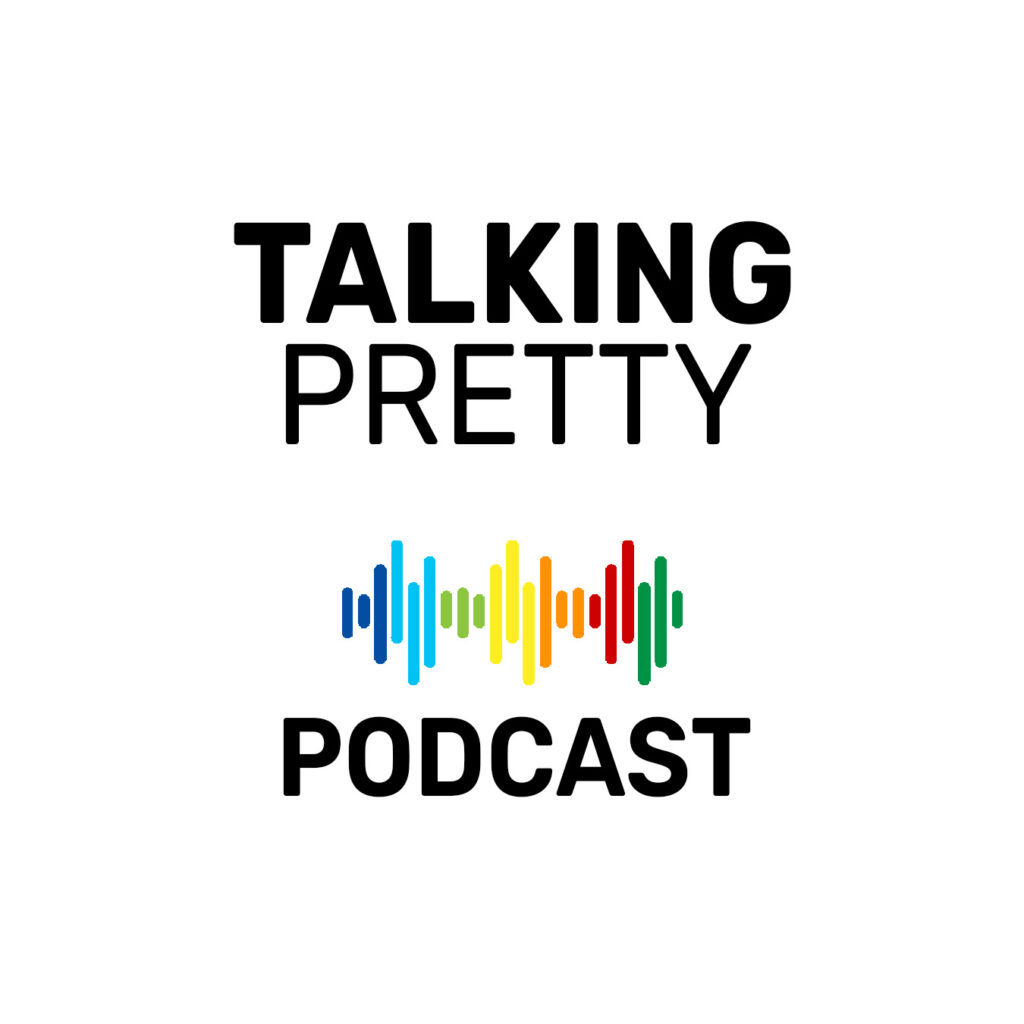Should we be buying leather? This is a very complicated topic, especially for us, in India.
When I think of leather, I think of my gorgeous, handcrafted Pakistani mojaris. Or of my super-comfortable, super-versatile Kolhapuri chappals. And then there is a most precious possession: A black leather handbag that was once my grandmother’s. On a conservative estimate, it’s about four decades old–still looks as good as new, and very luxurious.

Leather’s position as a luxury item is only too well established. If there was ever any doubt, it can be cleared by the fact that the richest man in the world, as I write this, is Bernard Arnault, the CEO of LVMH, a company that’s built its fortunes off making and selling luxury handbags and other accessories, primarily made of leather. But leather has also been a necessity. Skins and hides were the first clothes the human race knew. As a by-product of food, it was also convenient. Not to mention its insulatory properties. In fact, leather may have been one of the first manufactured materials.
When the British came to India, leather was amongst the most important crafts in Gujarat, which was the hub of India’s international trade at the time. At the turn of the twentieth century, the leather industry saw a massive boom, with Calcutta and Madras being the largest leather producers. It was also around this time that Kanpur, known as the Leather City of the World, became a major leather producer. Today, India accounts for 13% of the global production of hides and skins, producing 3 billion sq ft of leather, annually. We are the second largest producer of footwear in the world, after only China, but interestingly, we produce more cattle hide than China. We are also the third largest exporter of saddlery and riding harnesses. All of this also comes into perspective when we take into account that India is home to 20% of the world’s cattle.
But for many, the first word that comes to mind, at the mention of leather, is cruelty. And of course, leather is an incredibly cruel industry, in more ways than one. There is the more obvious argument about the killing of animals for fashion. But there is also the human cost, the impact on those who make and work with leather. And the impact of the leather industry on the environment.
For centuries, in India, leather was worked by the Dalit Chamar communities, regarded as untouchable, shunned and even ill-treated (to put it mildly) by the rest of society. They lived and worked on the outskirts of urban settlements, and would be called upon to collect and dispose of the carcasses of dead animals. Part of the disposal process was skinning the animals and tanning the hides to make leather. But with time, technology and changing fashions, much has changed. The tanning process now entails heavy metals like chromium and cadmium. And it’s no longer just dead animals that are being skinned! The leather industry is also responsible for most of the deforestation in the Amazon, with forest area being cleared for grazing. The Amazon forest, which has traditionally been a carbon sink, has now become a carbon emitter.

On the upside, cruelty-free vegan leather is also now a reality. But is that a straight-forward answer? What about the fact that several marginalised communities, with all that generational skill, continue to depend on leather for their livelihood? If not leather, what happens to the hides that are left behind by the meat industry? And what of our precious crafts, like Kashida, Kolhapuri, Mojaris, Jawaja and Nagra? So many burning questions! And with that, more pertinent questions for us, as consumers: Should we be buying leather? We, at Pretty As You Please, decided to break it down.
How does leather impact the environment?
The most obvious answer to that would be, leather is made from animal hides, thereby precluding the killing of animals. But to that, there is also the argument that many of these animals are already dead or have been killed for food and not leather. However, according to a report by Collective Fashion Justice, Under Their Skin, leather is not just a by-product of the food industry, but a valuable co-product. What that means, essentially, is that animals are being killed as much for their skins as they are for food.
Then there is the process of producing leather. The animal skins have to undergo multiple processes before they are actually usable, including, dehairing and degreasing, and finally, tanning to ensure they don’t rot or putrefy. These processes use heavy metals, including cadmium and chromium, and lots of water. In fact, according to the UN Food and Agriculture Organisation, one cowhide alone uses 100,000 gallons of water–that’s one person’s drinking water for 10 years.
Chromium sulphate is used to produce what is called Wet Blue, which is unfinished leather. This process is said to generate 50 million litres of wastewater, every day–the equivalent of 20 Olympic-size swimming pools, in Kanpur alone. And this untreated wastewater, full of carcinogenic substances, including formaldehyde, is dumped into the Ganges. As reported in the documentary, Slay, chromium contamination in the water and soil around the tanneries is a serious issue, and affects food production in the area, too, with skin and kidney disease, leprosy and cancers being common afflictions amongst those who live around these tanneries.

According to reports, including Under Their Skin, allowing hides to rot in landfill has a far lesser impact than converting it to leather does! Contrary to popular perception (including mine, till I started researching more on this), leather is not biodegradable. In fact, the degreasing and tanning processes make leather non-biodegradable, even if we use vegetable tanning processes instead of heavy metal salts.
How does leather affect the people who produce it?
In India, leather is a source of employment for 4.42 million people. The city of Kanpur, alone, has as many as 400 tanneries. The 2015 cattle slaughter ban in India, left several communities that depended on the leather industry for their livelihood in the lurch. However, these are also the communities that have been at the receiving end of all the harm from leather production. ‘It is not dignified work,’ asserts Rebecca Cappelli, producer of Slay. ‘This is not work that anybody should be doing,’ she asserts. ‘There are no labour laws, child labour is rampant, and the conditions that leather workers live and work in, are inhuman, to say the least. They are robbed of their “personhood”.’ ‘My artisans often tell me how, when they worked with real leather, the smell of it just never left their hands,’ adds Wamika Shekhawat, founder of Aulive, an accessories and luggage brand that works with vegan leather.

While we may speak of livelihoods, fact remains that most of those who work across the leather garments and accessories supply chain, are actually paid poverty wages. And then there are the health risks. According to a 2007 study published in the Indian Journal of Occupational & Environmental Medicine, those working in the leather industry face disproportionately high rates of cancer due to their work. ‘In my conversations with the late Rakesh Jaiswal, of Eco Friends, one disturbing aspect that came up was that many of the diseases the leather workers and those who live and work around tanneries suffer, actually go undiagnosed,’ reveals Cappelli. Without the wherewithal to seek medical assistance for their conditions, many don’t even know what they’re suffering from and that ends up not making it to the statistics.
So, should we stop buying leather?
Yes, and no. The bulk of the leather being produced here, in India, is being exported. So if you’re buying your leather from a fast fashion or luxury brand, you may have another think coming: Should we be supporting practices that are so harmful to the environment, to animals and to people?

The good news is, the leather products you already have are probably going to last you your entire lifetime, if you look after them well. Buying directly from artisans is also a great way to support indigenous crafts, which are believed to be inherently sustainable, because they were developed over centuries, in tune with the environment they were born in. And so, they typically work with best practices. There is also the argument about them being revivalist and more intimate, since they typically involve the entire community and are a way of life.
If there is a particular item you have been hankering after, choosing preloved is a good option. Fortunately, we also live in a time and age, when technology has ensured we have material options, too. Plant-based and eco-friendly alternatives are a great way to own something luxurious without causing as much harm. Testament to this is the brand, Chamar, that has taken on a new-age material (recycled rubber), subverted a centuries-old slur to make it a statement of their talent and skill, to produce a luxury product!
‘The beauty of it all is that these are all transferable skills,’ says Capelli. ‘What an artisan can do with animal leather, they can also do with plant-based and other alternative leathers. The same is also applicable to tannery workers.’ Shekhawat concurs.‘At the end of the day, the artisans are working with fabric,’ she says. ‘Sure, there is some need for adapting, because each leather has its own unique properties, but there will be work for the artisans, and work that they’re familiar with.’

